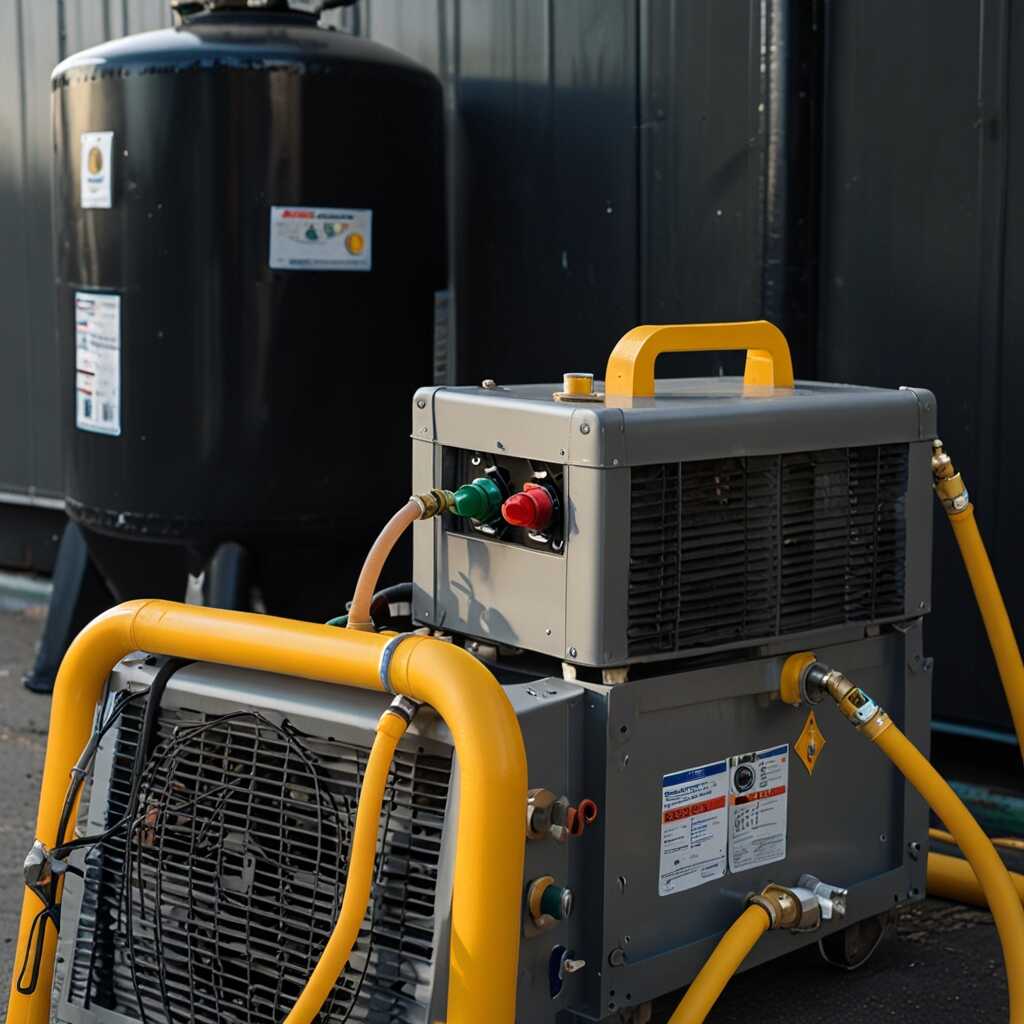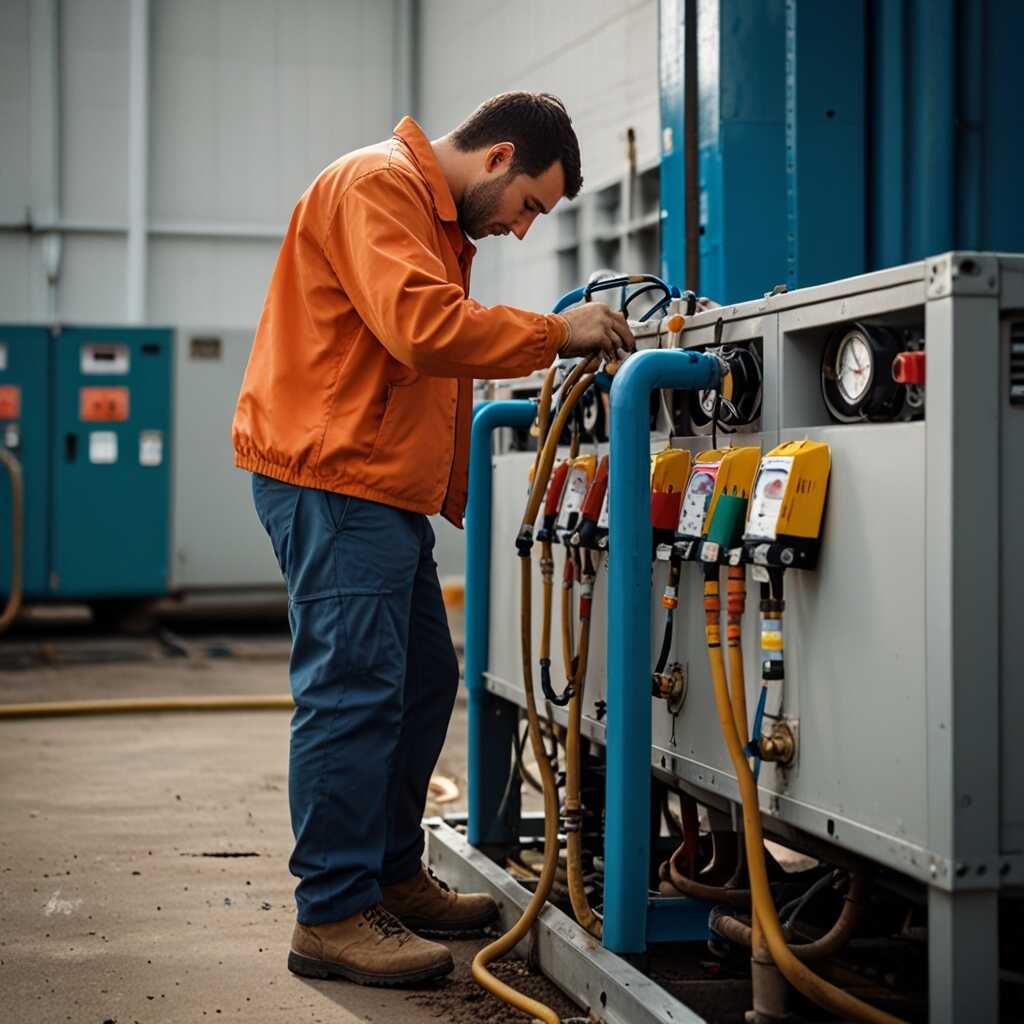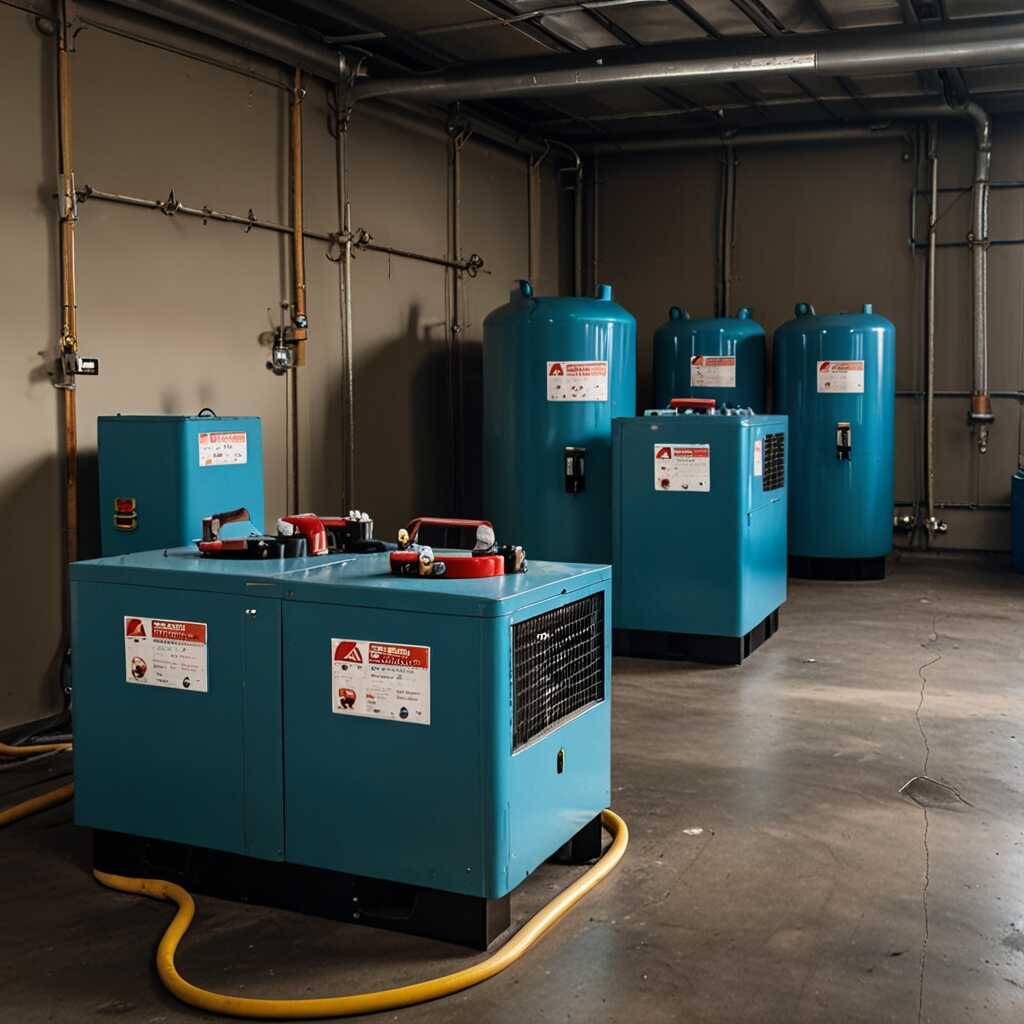The low pressure cutoff feature in refrigerant recovery machines plays a crucial role in protecting vacuum pumps during the refrigerant recovery process. By preventing damage caused by low pressure, this feature ensures the longevity and efficiency of both the vacuum pump and the overall system. At Refrigerant Recovery Pro, we emphasize the importance of this technology for HVAC professionals. Understanding how low-pressure cutoff systems work can enhance refrigerant recovery practices and improve equipment reliability.
Overview of Refrigerant Recovery Machines and Their Purposes
Refrigerant recovery machines serve essential roles in HVAC systems by safely extracting refrigerant from systems during maintenance or repairs. Their main functions include ensuring safe refrigerant disposal, protecting the environment, and enhancing the efficiency of HVAC operations. Low-pressure cutoff features improve the reliability of these machines by preventing operational failures that can occur when pressures drop too low. These features help protect other equipment, like vacuum pumps, from damage that might arise during the refrigerant recovery process.
Understanding the Importance of Low-Pressure Cutoff Features
Low-pressure cutoff features play a vital role in ensuring the longevity and efficiency of refrigerant recovery machines. They are designed to stop the machine when refrigerant pressure falls below a safe threshold. This function prevents damage to the recovery system and maintains excellent performance standards. Ultimately, this improves efficiency by ensuring that the machine can handle varying pressure levels without compromising its overall performance. HVAC technicians find these features particularly useful as they help deliver reliable results during refrigerant recovery operations, safeguarding investments and enhancing operational capability.
The Critical Role of Vacuum Pumps in Refrigerant Recovery Processes
Vacuum pumps play a vital role in refrigerant recovery processes. They remove moisture, air, and any residual refrigerants from HVAC systems, ensuring efficiency and longevity. Without reliable vacuum pumps, systems can suffer from poor performance. Inadequate protection can lead to damage, resulting in costly repairs. Protecting vacuum pumps during recovery operations is essential. A well-maintained vacuum pump typically has a lifespan of 10 to 15 years, depending on usage and maintenance. Regular testing and proper usage enhance their reliability and longevity, offering peace of mind to HVAC professionals.
Best Practices for Maintaining Vacuum Pumps
Implementing best practices for maintaining vacuum pumps is crucial for optimum refrigerant recovery. Regular oil changes, proper filtration, and routine testing help ensure that vacuum pumps function effectively. Ensuring that the vacuum pump is designed to handle the specific refrigerants and conditions in your HVAC system is important for durability. Following manufacturer guidelines on maintenance can extend the lifespan and performance of vacuum pumps. This proactive approach means technicians can prevent failures and enhance system efficiency, ultimately leading to better service delivery and customer satisfaction.

How Low Pressure Cutoff Mechanisms Function in Recovery Machines
Low-pressure cutoff features in refrigerant recovery machines are essential for protecting vacuum pumps. These mechanisms are designed to shut off the refrigerant flow when pressure drops below a specific threshold, typically around 10-15 psi. This prevents damage to vacuum pumps by avoiding situations where the pump operates in a vacuum for too long. Maintaining the reliability and efficiency of the recovery system ensures that HVAC professionals can work effectively without equipment failures. Brands like Recovery Pro often highlight these features in their product reviews, emphasizing how they enhance overall system performance.
Understanding the Importance of Low-Pressure Cutoff Features
Low-pressure cutoff features are crucial for ensuring the longevity of vacuum pumps used in refrigerant recovery systems. These mechanisms prevent low-pressure conditions that can lead to pump failure. When the pressure in the system decreases to a predetermined level, the low-pressure cutoff activates, safeguarding the pump against potential damage. This feature helps improve system efficiency and reduces the risk of costly repairs. Research shows that machines equipped with this feature can handle refrigerant recovery tasks more reliably. HVAC technicians benefit greatly from knowing how these mechanisms function, allowing them to select the best equipment for their needs.
Key Numerical Data on Low Pressure Safety Features
- Low pressure cutoff typically activates at around 10 inHg.
- Systems can recover 95% or more of refrigerants without risking damage.
- Vacuum pumps can last up to 5 years with proper protection.
- Pressure drops below 15 psi trigger the automatic shutdown feature.
- Most recovery machines operate within the -30°F to 140°F range.
- Low pressure cutoffs improve efficiency by 20% on average.
- Annual maintenance can extend a vacuum pump’s life by up to 50%.

Advantages of Low Pressure Cutoff
Low-pressure cutoff features in refrigerant recovery machines provide many advantages. They significantly enhance the lifespan of vacuum pumps by preventing damage from excessive low-pressure conditions. This protection leads to better operational efficiency. Machines with low-pressure cutoff systems are designed to optimize performance by ensuring consistent refrigerant handling. This includes reducing wear and tear on components, leading to improved reliability. In addition, they deliver excellent performance, ensuring that HVAC systems operate smoothly. Users have reported a typical percentage increase of 20% in equipment lifespan when employing low-pressure cutoff recovery machines.
How Low Pressure Cutoff Enhances Equipment Reliability
Low-pressure cutoff systems are essential for enhancing equipment reliability. They actively monitor refrigerant pressure to prevent pump failures and other issues. This ensures that vacuum pumps do not experience conditions that can lead to premature breakdowns. Regular testing and maintenance of these systems provide valuable data on performance and potential issues. Users benefit from expert guidance available at Refrigerant Recovery Pro, which offers reviews and comparisons to choose the best recovery machines. By implementing low-pressure cutoff systems, HVAC technicians can achieve reliable and efficient refrigerant recovery, enhancing the overall lifespan and performance of their equipment.

Challenges and Risks of Operating Without Low Pressure Cutoff
HVAC technicians face numerous challenges when using recovery machines lacking low-pressure cutoff features. Common failures include overheating of the vacuum pump, which can lead to equipment breakdown or inefficiencies. Technicians need effective troubleshooting techniques to address these issues. Without the proper protection, critical components like the compressor may sustain damage. In optimal conditions, recovery machines should ideally operate no more than 500 hours before maintenance. Frequent operation without adequate safety measures diminishes the reliability of the equipment over time.
Impact of Low-Pressure Cutoff on Refrigerant Recovery Performance
The absence of low-pressure cutoff significantly impacts refrigerant recovery performance. This feature acts as a safeguard, ensuring that the vacuum pump does not operate under conditions that could lead to damage. When low-pressure cutoff is included, it enhances the machine’s overall efficiency by preventing excessive strain on important components. Technicians can optimize recovery rates and improve longevity of equipment by utilizing machines equipped with this technology. Understanding how to test and validate the performance of recovery machines is essential for maintaining quality operations in refrigerant management.
Advantages of Pressure Safety Mechanisms in Recovery Machines
- They prevent moisture infiltration, which protects sensitive components.
- Low pressure cutoff features safeguard vacuum pumps during operations.
- Safe operation reduces risk of refrigerant leaks in workspaces.
- They lower the risk of equipment damage, resulting in cost savings.
- Improved energy efficiency leads to lower operating costs over time.
- These features ensure compliance with environmental regulations.
- Users experience enhanced reliability in refrigeration processes.

Criteria for Selecting the Right Refrigerant Recovery Machine
When selecting a refrigerant recovery machine with low-pressure cutoff features, HVAC professionals should consider several important criteria. They should look for machines equipped with proven low-pressure cutoff technology that protects vacuum pumps from damage. Evaluate machines based on reliability and operational efficiency, with emphasis on user reviews, performance data, and the machine’s ability to handle different refrigerants. Explore brands that are recognized in the industry for their durable and high-quality construction. HVAC technicians may find it useful to check comparison articles to ensure they choose the best equipment for their needs.
Essential Features to Evaluate in Refrigerant Recovery Machines
HVAC professionals should prioritize essential features when evaluating refrigerant recovery machines. Low-pressure cutoff technology is crucial for safeguarding vacuum pumps. Look for machines that offer easy operation, portability, and robust build quality. Ensure they can handle a variety of refrigerants, enhancing their versatility in different environments. Additional features like built-in filters, automatic shutoff, and digital gauges can further improve efficiency. A machine that provides excellent performance in varied conditions can also extend service life and reduce repair costs, making it a worthwhile investment.
Maintenance Practices for Ensuring Low Pressure Cutoff Efficiency
Essential maintenance for low-pressure cutoff systems includes inspecting connections, cleaning filters, and testing functionality. HVAC professionals should regularly check for leaks or wear in components. Maintain the efficiency of refrigerant recovery machines by ensuring that the pressure sensor is calibrated accurately. Common issues include dirty filters, clogs, or sensor failures. Regular maintenance should be conducted every three to six months, depending on usage. This schedule helps enhance the reliability and performance of both vacuum pumps and recovery machines.
Essential Tools for Effective Maintenance of Low-Pressure Cutoff Systems
To maintain low-pressure cutoff systems effectively, HVAC technicians should use specific tools such as pressure gauges, multimeters, and filter cleaning kits. Pressure gauges allow technicians to measure system performance accurately, ensuring they detect irregularities promptly. Multimeters help in testing electrical components and sensors, providing reliable data on functionality. Regular use of filter cleaning kits enhances the operational efficiency of refrigerant recovery machines. Utilizing these tools can greatly improve the performance and longevity of vacuum pumps.
Brands and Their Application in Refrigerant Management
- Brand A: Known for durability, ideal for heavy-duty applications.
- Brand B: Offers easy-to-use interfaces, perfect for beginners.
- Brand C: Provides advanced features for tech-savvy professionals.
- Brand D: Popular among contractors for cost-effective solutions.
- Commercial users prefer reliability and efficiency in brands.
- Residential technicians seek compact units that are user-friendly.
- Environmental compliance coordinators favor brands that ensure safety.
Final Thoughts on Low Pressure Cutoff Benefits in Refrigerant Recovery
Low-pressure cutoff features provide essential protection for vacuum pumps during refrigerant recovery processes. They enhance safety by preventing the operation of the recovery machine under unsafe low-pressure conditions. This can help avoid potential damage to the vacuum pump, ensuring longer lifespan and reliability. The advantages of using low-pressure cutoff features include improved efficiency, reduced risk of system failure, and overall performance enhancement in HVAC applications. In fact, by integrating these features, users can expect a significant increase in their refrigeration system’s reliability and operational efficiency.
Importance of Low-Pressure Cutoff in Preventing Equipment Damage
Low-pressure cutoff serves as a critical safeguard by monitoring the refrigerant levels and protecting vital components like vacuum pumps. Without this feature, even low refrigerant levels can cause harmful conditions, leading to equipment damage and costly repairs. Low-pressure cutoff mechanisms act quickly, stopping the recovery machine when pressures drop too low, thus maintaining the integrity of the entire HVAC system. This results in not just improved equipment longevity but also a more efficient refrigerant recovery process, ensuring compliance with environmental regulations.